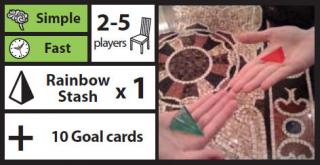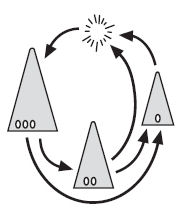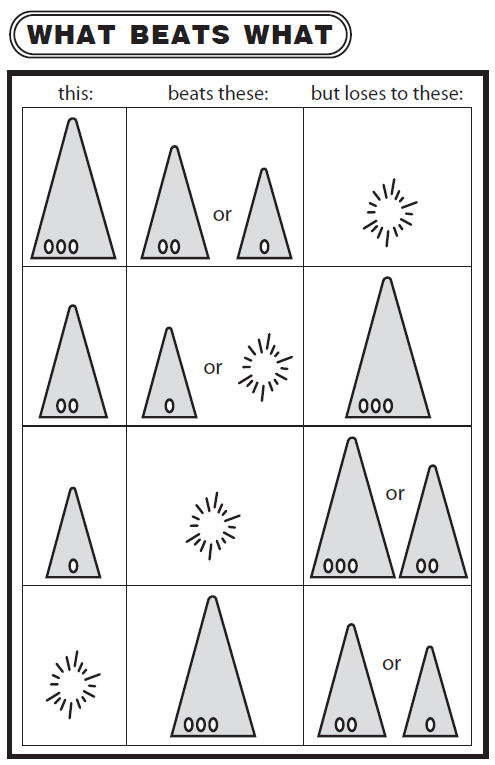
How to Play Nothing Beats a Large
Designed by Andy Looney

Introduction: Nothing Beats a Large is a quick and easy game designed for situations not otherwise good for game-playing, notably while a group is standing in a long, slow moving line.
Number of Players: 2-5
Equipment: 1 Rainbow Stash, 10 Goal cards
Goals: You need 2 cards for each of the colors in your stash. Twin Win cards are perfect. Another suggestion is to scavenge color-coded cards from other games.
Setup: Choose as many colors as there are players, and mix those pyramids together. (Set aside the extra pyramids when playing with fewer than 5, down to a minimum of 3 colors.) Group them into sets of 3, one of each size but of 3 di erent colors. Give each player a mixed color trio.
With 2 players, use 3 colors, and divide the extra trio between the players, with one getting the Large and the other the Medium and the Small.
Shuffl e up the secret goals (again, setting aside any unused colors), and deal 2 goal cards to each player. (Ideally, the players will have pockets to store their goal cards in.)
Who Starts: The owner of the pyramids makes the fi rst challenge.
Casting: The game consists of brief challenges, in which 2 players each conceal a piece – or nothing – in one hand, while hiding their other pieces behind their backs. When both are ready, the players simultaneously reveal what they’re holding. This is called Casting.

On Your Turn: Players cast and compare their pieces. The winner steals any piece from the loser. Whenever there’s a tie, the winner is the player with the fewest pieces. If that’s also a tie, the players cast again.
Before casting, each player may look at all the pieces currently owned by the other player.
If a player has zero pieces, they immediately steal one piece of their choice from each other player.
The player who lost goes next, and must challenge a player from among those who didn’t just cast.
Winning: To win, you must rst collect all 3 pyramids of the color of one of your Goals, and then you must collect the other color. When you get a full set of one of your colors, reveal your card; you win as soon as you complete your second goal (even when you no longer control your fi rst color).
If your cards both show the same color, your second Goal is to collect a trio of any other color.


